
| Home Page | The Books | The Movies | The Science | Sources | Contact Me |
|---|

Unfortunately, dinosaurs probably cannot be cloned and brought back to life. Their DNA is too old since dinosaurs have been extinct for over 65 million years. Any genetic information is not likely to survive for one million years, so the dinosaurs are simply too old to be cloned. Scientists have not been able to discover intact complete carcasses with skin or muscle. Also, if dinosaur DNA was recovered from the inside of a mosquito, the dinosaur blood had mixed with the mosquito's blood, and the DNA would also mix together. Extracting DNA from the mosquito and cloning it could potentially create a half-mosquito-half-dinosaur creature. Most of the dinosaur DNA that has been salvaged is incomplete and not able to be cloned. Any gaps in the DNA would have to be filled with actual complete dinosaur DNA if scientists want to clone a real dinosaur. Manipulating the genes and adding modern reptile DNA may create a dinosaur-like creature, but it will not create a true dinosaur. Also, if the DNA was encased in amber, it is likely through time, heat, and pressure that the DNA would undergo a metamorphosis and destroying the genes and turning them into minerals.
However, scientists are currently researching how to clone and bring other extinct animals back to life! Scientists have analyzed several strands of mammoth and Tasmanian tiger DNA, and have concluded that by implanting extinct DNA in a close living relative’s embryo, there is a chance that extinct animals could be successfully brought back to life. Scientists believe that within the next few decades, the following extinct species have a probability of returning:
The Neanderthal: The Homo sapiens ancestor went extinct 25,000 years ago at the end if the Ice Age. Plenty of the Neanderthal culture has been discovered through cave dwellings, paintings, and graves. DNA has been extracted from skeletons as well as some articles of clothing. German scientists are preparing a draft of the genome that could be cloned. The scientists intend to use humans as the ideal surrogates since Homo sapiens and Neanderthals are descended from a common ancestor. |
 |
 |
Mammoth: The giant mammoths went extinct 11,000 years ago at the end of the Ice Age. The mammoth probably could not adapt to the warmer temperatures, and the increase in humans hunted the large animals for food supplies. Several mammoths have been recovered, including an entire intact, nearly perfectly preserved mammoth calf in Russia. The excellent preservation in the permafrost allows scientists to obtain DNA successfully and have a strong chance of brining the mammoths back to life. The cold preserves DNA extremely well and does not damage the strands. The closest relative to the mammoth is the African elephant (their DNA is almost 99% identical--that is closer than humans and primates!) |
Sabre-toothed tiger: The Sabre-toothed tiger went extinct 10,000 years ago at the end of the Ice Age. Many well-preserved carcasses have been salvaged from the La Brea tar pits in Los Angeles. Other carcasses have been found frozen as well. Scientists have enough DNA in the well-preserved bodies to attempt to re-create the sabre-toothed tigers, and would plan to use lions as a surrogate parent. |
 |
 |
Short-faced bear: The short-faced bear went extinct 11,000 years ago at the end of the Ice Age. This giant bear was around 10 feet tall when it stood upright, and weight more than 15 hundred pounds. Entire intact carcasses have been preserved in permafrost in the northern United States and Canada and the Spectacled Bear would be the best option as a surrogate. |
Tasmanian tiger: The last Tasmanian tiger died in Hobart Zoo in 1936 and the entire species went extinct. Because the last of the species died in a zoo, its remains are well preserved and the tissues will provide good-quality DNA. The Tasmanian devil would make good surrogate. Scientists have already begun attempting to recreate the Tasmanian tiger by implanting its DNA in mouse embryos. Although no Tasmanian tigers have been born, the genetic project is already underway, and we could see Tasmanian tigers once again in the near future. |
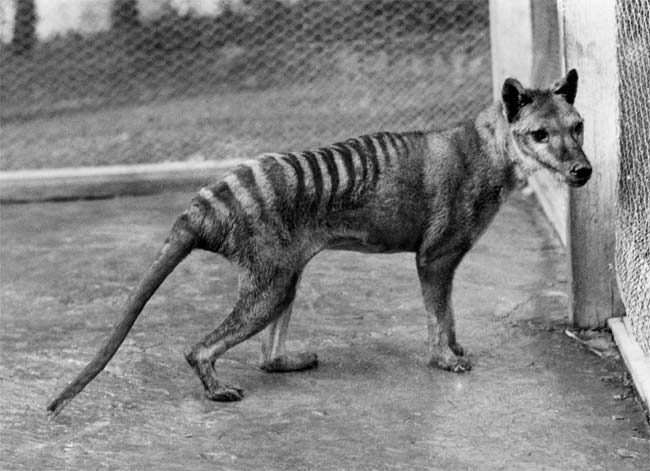 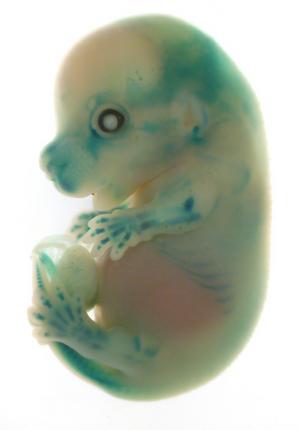 |
 |
Glyptodon: The glyptodon, an enormous prehistoric armadillo, went extinct 11,000 years ago during the Ice Age. The glyptodon is known for its spiky, club-like tail, and preserved remains have been found in dry South American caves and countrysides. Modern armadillos would be exceptional surrogates for their giant ancestors. |
Dodo: This flightless bird went extinct is 1690 because of dog and human hunting activity. But in 2002 geneticists at Oxford University got permission to cut into the world's best-preserved dodo specimen, a foot bone that still had skin and feathers. The well-preserved DNA could be inserted into a pigeon as an acceptable surrogate. |
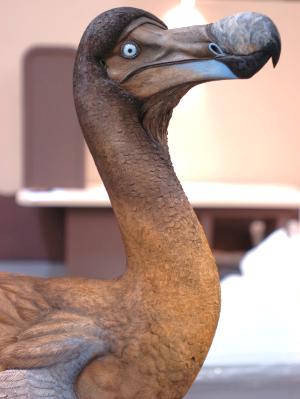 |
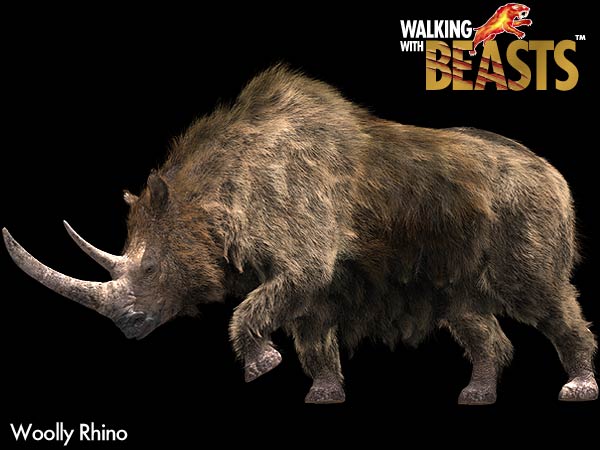 |
Woolly rhinoceros: The woolly rhinoceros went extinct 11,000 years ago at the end of the Ice Age. Just like with mammoths, several whole carcasses complete with hair, hooves, and horns have been preserved in permafrost. These tissues can be cleaned and salvaged, and the DNA is nearly identical to the modern rhino, which would make an excellent surrogate. |
Giant ground sloth: This giant sloth died out 13,000 years ago during the Ice Age. This massive creature was nearly as tall as a giraffe on its hind legs and weighed nearly as much as a mammoth. Several specimens have been found with hair, an excellent source of DNA, frozen in the permafrost in South America. The smaller ground and tree sloths are close enough relative and could be used as surrogates. |
 |
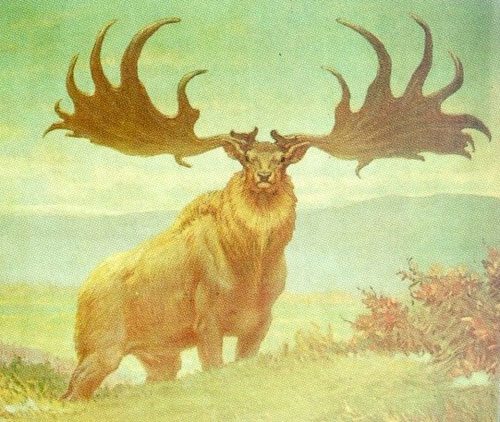 |
Irish elk: The giant Irish Elk live in Eurasia but went extinct 8,000 years ago because of the Ice Age. The average Elk was 7 feet at the shoulder and had enormous 12-foot wide antlers. Several well-preserved carcasses are stored in Dublin, Ireland. The closest relative is a deer (not an elk) and would make a good surrogate. |
| Moa: The Moa, a large flightless bird, was hunted to extinction in the 1500s. The Moa is similar to an ostrich, and several well-preserved bones, nests, and eggs, can be found in caves in New Zealand. The ostrich would be an acceptable surrogate. |
 |